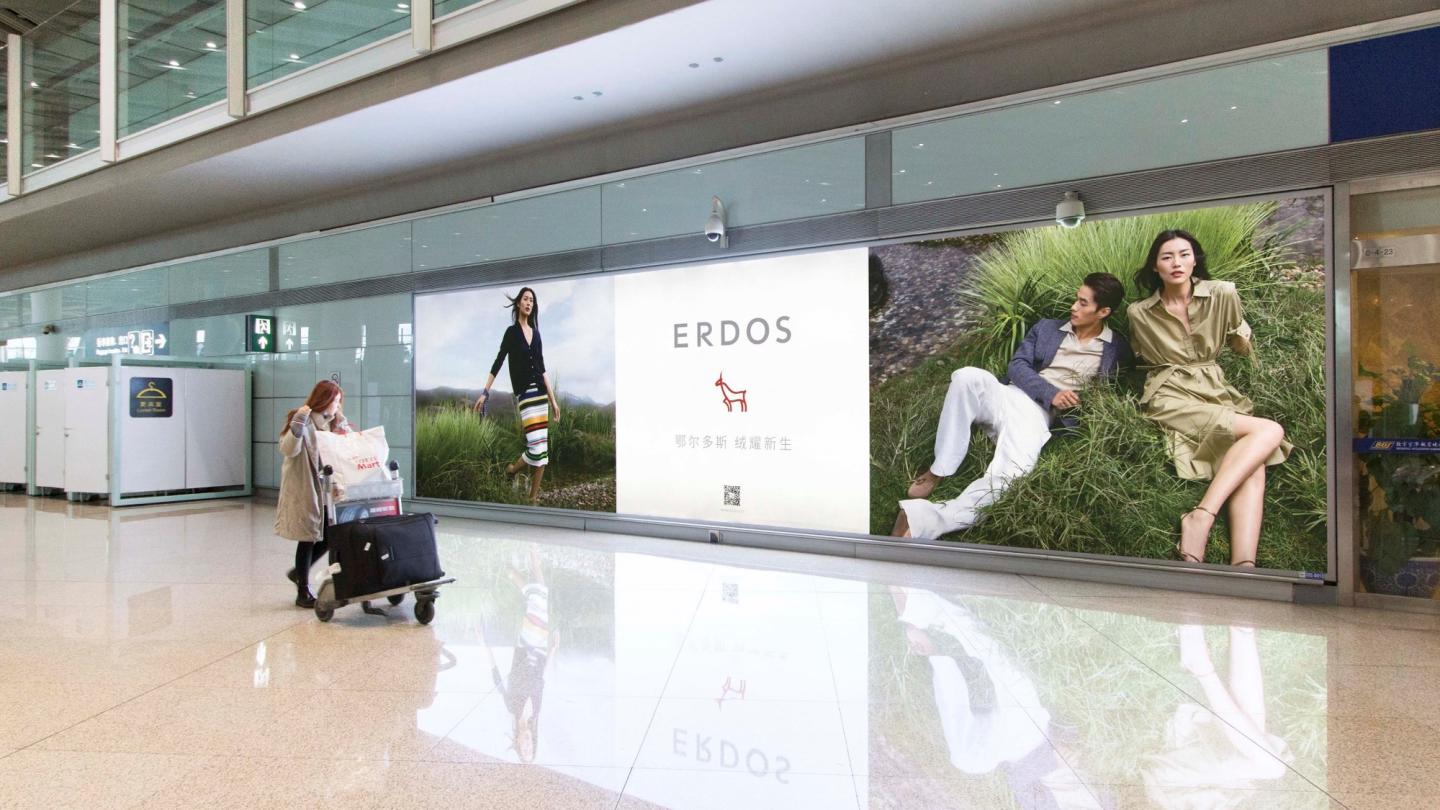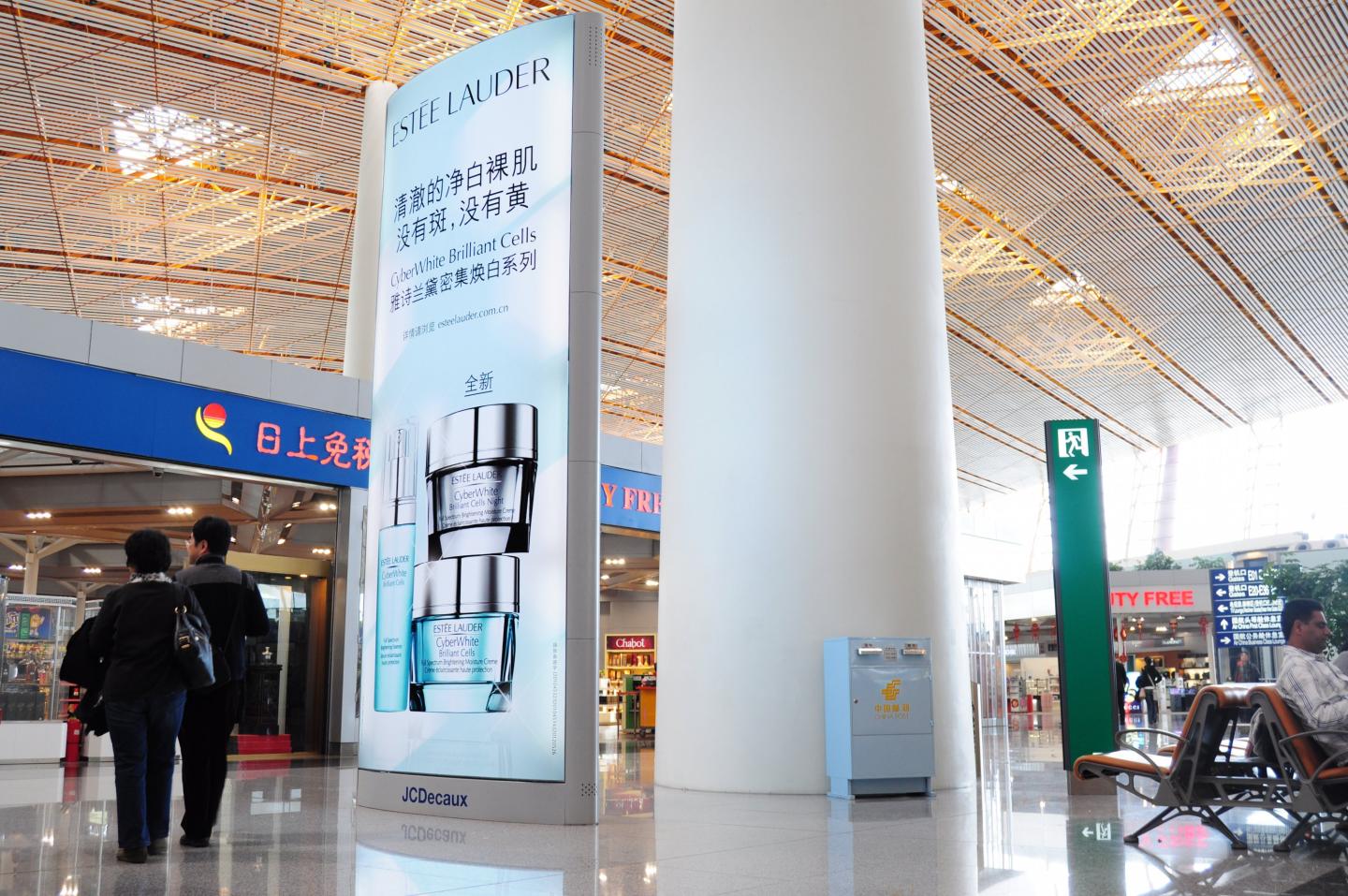For brands
China is ready for a luxury world takeover – and it starts in airports
THE CHINESE TASTE IN LUXURY: AN EVOLVING NARRATIVE
While China ranks 2nd worldwide for number of millionaires and remains a considerable importer of western luxury products, the affluent Chinese audience is increasingly starting to appreciate national luxury brands - a trend registered for the first time a few years ago and predicted to be on the rise. The drop in foreing brand share has involved all sectors, the smartphone industry (-78% in ten years) and the car industry (-13%) being prime examples. One thing that luxury Chinese brands are doing right, according to the findings of a report from marketing consultancy Added Value, is cultural innovation and the ability to leverage on cultural codes to create powerful connections to customers, drawing from an in-depth knowledge of the nation’s culture and history. The tastes of Chinese consumers are rapidly evolving. 84% of customers surveyed believe that in the future, Chinese luxury brands will be "just as good" as western luxury brands, and increasingly associated with strong heritage and authenticity. The parameters of luxury in the eyes of Chinese consumers (strong heritage, craftsmanship) vs Western brands (trendiness, exclusivity) also differ and this reflects a cultural difference that could provide an advantage to Chinese brands. A successful growth strategy for many Chinese giants has been acquiring well-recognised western brands to raise their profile both nationally and internationally and conquer customers worldwide. Ruyi Fashion Holding Group that controls Sandro, Maje and Claudie Pierlot (SMCP) along with Huawei, who engineered their mobile phones with German camera manufacturer Leica, are successful examples of strategic acquisitions from high-profile brands raising credibility and company profile.What role do airports play within the evolving preferences of Chinese consumers?
Travel trends from China show a growing consumer market, with China continuing to lead global outbound travel in terms of expenditure. Chinese outbound travel to EU destinations went up by 5.1% year-on-year in 2018. 2018 was “EU-China Tourism Year”, an initiative by the European Travel Commission to promote the EU as a tourism destination to the fast-growing Chinese market: it successfully contributed to increased Chinese arrivals (+7.9%) in September – December 2018, and a 16.9% increase in EU bookings for the first four months of 2019. These considerations create a fertile ground for airport advertising for Chinese premium brands: an effective channel to reach the affluent Chinese shoppers worldwide and enter the global luxury market alongside established luxury giants, but with a competitive advantage stemming from an in-depth knowledge of Chinese culture.
AIRPORTS: THE PERFECT PLACE TO EFFECTIVELY REACH CHINESE AFFLUENT SHOPPERS
Chinese tourism consumption has increased steadily – on average registering a 3% year-on-year increase forecasted to continue, main destinations being Asia and Europe, followed by the USA. Shopping is the biggest expense for Chinese tourists and the main reason for travel for nearly 50%. Business travel also adds to the significant number of Chinese nationals travelling through airports worldwide, therefore creating a host of opportunities for brands to increase presence and sales through airport advertising. Targeting an influential crowd like Chinese travellers would prove to be a winning first step towards raising the global profile of a brand.“I travel to destinations where I can find luxury products to buy” – Affluent Insights Luxury Study 2017-18
A study by Mindset from 2016, interviewing over 2400 global shoppers in 12 countries, has provided insights on Chinese consumers compared to their global counterparts. With an income greater than average, a much larger percentage of Chinese travellers (89% compared to 60% average) consider shopping whilst travelling an integral part of their trips, allocating plenty of time for it and making it a fundamental factor when choosing a destination (depending on what brands are available) and accommodation. Seeing Chinese brands advertised in airports would, therefore, catch the eye of Chinese travellers, triggering their familiarity with the brand and their above-average appreciation for adverts in their language and catering to their taste abroad (81% vs 52% globally). This is in line with the general finding that luxury brands must advertise in suitable affluent locations, and airports are prime examples. The airport environment has a luxurious ambience, and 92% of "global shoppers" (the affluent and early adopter audience interested in the luxury category) pay attention to the advertising. Airports are also a great platform for experiential marketing initiatives (e.g. pop up shops, interactive screens) due to availability of large spaces, an audience in no rush (average waiting time for airport passengers is 3h) and the possibility of raising the profile of premium brands through unique ways to engage the audience. This holds true for Chinese consumers as well, who declare to be considerably eager to visit airport stores if entertaining promotional activities catch their attention.

HOW CAN AIRPORT ADVERTISING HELP CHINESE LUXURY BRANDS?
- 71% of luxury jet setters expect to see prestigious brands advertised at the airport. People often associate the airport with a high-flying lifestyle and therefore the brands that advertise in this environment, which is also often filled with luxury retailers, add to the impression of prestige and premium quality of the product. Advertising luxury Chinese brands side by side to established premium brands would associate them to a similar level of exclusivity, opulence and high quality.
- Airport advertising connects with alert consumers in a unique environment and receptive mindset, building brand awareness.
- 85% of passengers would respond to an airport advertising message and are engaged during long dwell times. This is especially true for the Chinese audience: a much larger percentage of Chinese travellers (82% vs 69% worldwide) allow more than 30 minutes for shopping in stores at the airport when travelling abroad.
- Airport advertising is a great platform for experiential marketing initiatives, that can help brand storytelling and support positive connotations towards the “Made in China” stereotype. Experiential marketing initiatives can help brand storytelling and offer unique interactive encounters, catering to an affluent audience ready to stop by and listen to the brand. From special build structures to interactive campaigns, social integration, charging stations, pop-up shops, brands have a wide range of unique engagement options. The ability of OOH advertising to incorporate data also makes it easy to display dynamic targeted content in airports (e.g. personalised welcome messages in Chinese, real-time information on next closest brand store, etc), creating a deeper engagement with their audience, increasing recall and enhancing brand image.
Airport advertising caters to huge numbers of passengers from all over the world every day, and it is forecasted that the global trend will only grow: air passengers are set to double in 2036, reaching 7.8 billion. Whether for business or enjoyment, brands can count on a receptive, affluent audience. Chinese luxury brands can leverage on these favourable conditions by using airport advertising to build brand awareness, target global trendsetters and accelerate internalisation, gain prestige, create experiential campaigns that raise the brand profile and change perceptions around “made in China” in retail.

Sources:
https://www.campaignlive.co.uk/article/china-turns-imported-homegrown-l… (2014)
https://www.thedrum.com/news/2017/02/15/chinese-luxury-shopping-returns-growth-how-can-brands-build-the-momentum (2017)
https://www.bloomberg.com/news/articles/2018-11-22/dolce-gabbana-china-blunder-rages-as-shopping-sites-pull-brand(2018)
http://www.jcdecauxna.com/airport/document/world-possibility (2016)
https://www.luxurysociety.com/en/articles/2018/04/buying-power-affluent-asian-women/ (2018)



